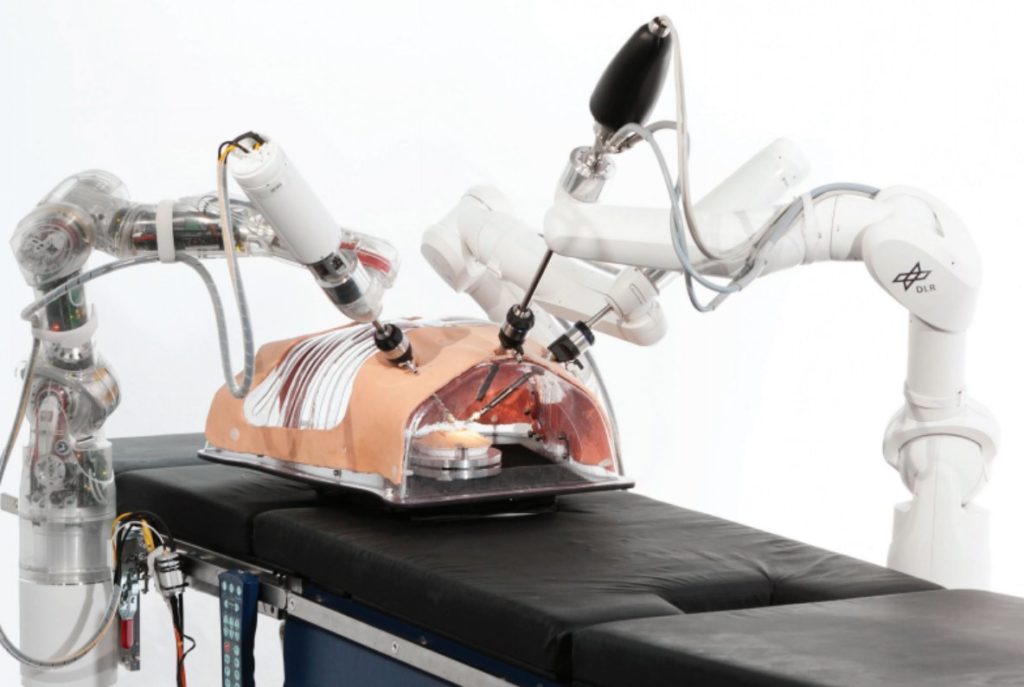Da Vinci In Operation Theatres

Introduced almost two decades back, robotics in oncology surgery is improving patient recovery and alleviating their struggle against the disease
By Aatika H Jain
It’d be a surprise if you weren’t fascinated by the surgery pod in the Hollywood movie Prometheus, the science fiction film set in the year 2100. The med pod is capable of all kinds of surgical procedures without any human intervention. While it definitely looks like a peek into the future, robots have been a part of the surgery field for close to two decades now, perhaps marking the beginning of it all. In the late 1990s and early 2000s, robotics saw significant developments as viable surgical technology. Since then, laparoscopic (tiny incision) and robot-assisted surgical procedures have been developed to improve a patient’s recovery.
Robot-assisted surgery is a minimally invasive procedure that has progressed over the years, providing for better outcomes. During the surgery, it introduces a computerized assistant between the surgeon and the patient. The surgeon is stationed at a console in the operating room, managing the movements of the robotic arms. There are three to four robotic arms, which are inserted into the patient’s body through tiny incisions; one of the arms has a camera at its end, two other arms act like the surgeon’s hands and the fourth one removes blockages if any. A team of surgeons is also at hand in the room. These robots have helped oncology surgeons to perform complicated procedures with minimally invasive methods. It involves smaller and fewer incisions than conventional open surgeries. In oncology, surgery is the definitive approach to treat solid tumors in the organs. Since 1987, when the first laparoscopic surgery, a cholecystectomy (surgical removal of gall bladder), was performed, it has largely replaced open cancer surgeries to cut down on hospital stay post-surgery, blood loss, postoperative pain, infection rate and to improve outcomes.
“Cancer Surgery Is Precise Work. The Primary Cancer Needs To Be Removed With Sufficient Margin. Extensive Lymph Node Dissection Has To Be Done. Though Most Surgeries Can Be Done Laparoscopically, The Limitation Is For Cancers That Are In Difficult Areas Of The Body.”
Dr Sandeep Nayak, Senior surgical oncologist, MACS Clinic, Bengaluru
The laparoscopic approach has been nothing short of a miracle in the field of abdominal, gynecological and urological surgeries. On the flip side, it lacks the natural adroitness of a skillful surgeon as fine dissections often become tricky with a two-dimensional view. Robot-assisted surgery came to the rescue with its three-dimensional view of the operative area and seven degrees of freedom, with the robots canceling out the surgeon’s hand tremors and stabilizing the surgical instruments. The cornerstone of all surgeries is precision and robotic surgery has improved this aspect multifold.

“Cancer surgery is precise work,” says Dr. Sandeep Nayak, senior surgical oncologist at MACS Clinic and Fortis, Bengaluru. “Primary cancer needs to be removed with sufficient margin. Extensive lymph node dissection has to be done. Though most cancer surgeries can be performed laparoscopically, the limitation is for cancers that are in difficult areas of the body. This is because laparoscopic instruments lack human wrist-like movement and mostly give 2D vision to the surgeon. Robots are designed to overcome these factors.” It has also greatly reduced the surgeon’s fatigue as the surgeon is seated at the console through long-drawn procedures. “Early on, gynecologic oncologists recognized that minimally invasive surgery was associated with less surgical morbidity and that it shortened postoperative recovery,” says Dr. Jem Kalathil, senior consultant, surgical oncology at Aster Medcity, Kochi. “Scientific papers have shown a role for robotic surgery in early-stage cervical and endometrial cancer, advanced cervical cancer, fertility-sparing procedures for cervical cancer, and early-stage ovarian cancer.”
Robot-assisted surgery helps with faster postoperative recovery with fewer scars and less pain. But it comes at a high cost and does not directly affect the cancer treatment outcome. Robotic surgical systems have astronomical fixed costs, with additional maintenance fees. The da Vinci Surgical System from Intuitive Surgical Inc, a leading robotic system in this field, costs $2 million on an average, plus annual maintenance charges.
“Even now more than 80% of the cancer surgeries happen by a conventional open approach,” says Dr. Nayak. Considering the high cost incurred by the robot-assisted oncology surgery, it is more beneficial for procedures where there are no other generally used minimally invasive techniques. Robotic surgery is most advantageous in instances where surgeons have to operate in very confined or hard-to-reach spaces within the body. “Robotic surgery has the greatest advantage in cases of prostate cancer, rectal cancer, oesophageal cancer, and head and neck cancers,” states Dr. Nayak. “I have also used it for performing scarless robotic thyroidectomy technique called RABBIT and scar-less surgery for oral cancer which I call minimally invasive neck dissection, both of which are my inventions.”
He also explains that although all surgeries that are performed by laparoscopy can be performed robotically, it may not be of many advantages over laparoscopy as the cost incurred will be significantly higher. As per the Intuitive Surgical website, every 36 seconds, a surgeon uses the da Vinci robotic surgical system to perform minimally invasive procedures. The high cost of the da Vinci system could also possibly be because of the lack of competition as there are not many players in the industry. With time and competition, every new technology tends to become cheaper and easily available to a wider section of society.
“As many hospitals and institutes install these systems and more surgeons train in robotics, the approach will become more popular. The cost is the forbidding factor for most hospitals as well as patients. I expect this to change with time,” says Dr. Nayak. From Leonardo’s almost five-centuries-old mechanical knight to da Vinci in operation theatres, the day doesn’t seem far when robots would be more extensively used in the healthcare institutions.
















